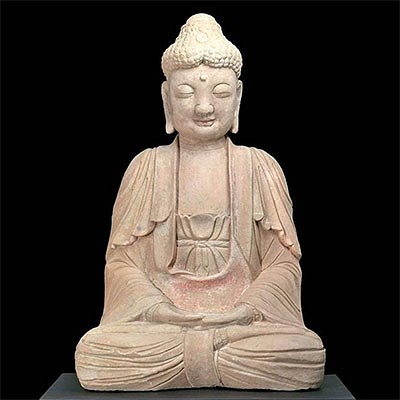Colima Pottery Head Effigy Vessel of Shaman - TL Tested
Lot 118
About Seller
Artemis Fine Arts
686 S Taylor Ave, Ste 106
Louisville, CO 80027
United States
Selling antiquities, ancient and ethnographic art online since 1993, Artemis Gallery specializes in Classical Antiquities (Egyptian, Greek, Roman, Near Eastern), Asian, Pre-Columbian, African / Tribal / Oceanographic art. Our extensive inventory includes pottery, stone, metal, wood, glass and textil...Read more
Categories
Estimate:
$3,000 - $4,500
Absentee vs Live bid
Two ways to bid:
- Leave a max absentee bid and the platform will bid on your behalf up to your maximum bid during the live auction.
- Bid live during the auction and your bids will be submitted real-time to the auctioneer.
Bid Increments
| Price | Bid Increment |
|---|---|
| $0 | $25 |
| $300 | $50 |
| $1,000 | $100 |
| $2,000 | $250 |
| $5,000 | $500 |
| $10,000 | $1,000 |
| $20,000 | $2,500 |
| $50,000 | $5,000 |
| $100,000 | $10,000 |
| $200,000 | $20,000 |
About Auction
By Artemis Fine Arts
Feb 18, 2021
Set Reminder
2021-02-18 10:00:00
2021-02-18 10:00:00
America/New_York
Bidsquare
Bidsquare : Exceptional Antiquities, Asian, Ethnographic
https://www.bidsquare.com/auctions/artemis-gallery/exceptional-antiquities-asian-ethnographic-6373
Museum-worthy examples of Egyptian, Greek, Roman, Etruscan, Near Eastern, Far East / Asian, Pre-Columbian, African / Tribal, Oceanic, Native American, Spanish Colonial, Russian, Fossils, Ancient Jewelry, Fine Art, so much more! Artemis Fine Arts info@artemisfinearts.com
Museum-worthy examples of Egyptian, Greek, Roman, Etruscan, Near Eastern, Far East / Asian, Pre-Columbian, African / Tribal, Oceanic, Native American, Spanish Colonial, Russian, Fossils, Ancient Jewelry, Fine Art, so much more! Artemis Fine Arts info@artemisfinearts.com
- Lot Description
Pre-Columbian, Western Mexico, Colima, ca. 300 BCE to 300 CE. A wonderfully animated and naturalistic handmade pottery effigy vessel in the form of a human trophy head adorned in russet and creamy beige slip. Resting upon an ovoid base, this ancient vessel presents a hemispherical form topped with a tall spout projecting from where a shaman's ceremonial horn would be worn. The coffee bean-shaped eyes are distinctively rendered open with fully articulated lids, while the prominent, aquiline nose is large and offsets the closely placed eyes. The mouth is shown open with bared teeth. A pair of tab-shaped ears flanks the head, each featuring a sizable earspool. The curious countenance wears a criss-crossed strapping often seen on figures of shamans, which is decorated with finely incised undulating designs. The head seems more alive than dead suggesting that some of these effigies are meant to be living portraits of powerful shamans. Size: 7.125" W x 9.25" H (18.1 cm x 23.5 cm)
Colima, located on Mexico's southwestern coast, was during this time part of the shaft tomb culture, along with neighbors to the north in Jalisco and Nayarit. In this culture, the deceased were buried down shafts - 3 to 20 meters deep - that were dug vertically or near vertically through the volcanic tuff that makes up the geology of the region. The base of the shaft would open into one or more horizontal chambers with a low ceiling. These shafts were almost always dug beneath a dwelling, probably a family home, and seem to have been used as family mausoleums, housing the remains of many related individuals. This is a vessel likely made to be placed inside those mausoleums, perhaps to mediate between the worlds of the living and the dead.
What is the meaning of this vessel? Much of the religious practice of this culture and others in Mesoamerica involved shamans/priests entering an altered state, often using strong alcohol or hallucinogenic substances. The blank eyes and agape mouth of the face suggest that this is a depiction of a religious trance, and the horn indicates that this is a highly-experienced and immensely-powerful shamanic individual.
This piece has been tested using thermoluminescence (TL) analysis and has been found to be ancient and of the period stated. A full report will accompany purchase.
Provenance: ex-old private New England, USA collection, acquired in the 1970s; ex-old private Los Angeles, California, USA collection, 1960s to 1970s
All items legal to buy/sell under U.S. Statute covering cultural patrimony Code 2600, CHAPTER 14, and are guaranteed to be as described or your money back.
A Certificate of Authenticity will accompany all winning bids.
We ship worldwide and handle all shipping in-house for your convenience.
#161685Restoration to base and spout. Expected surface wear with some light scratches and chips to the paint commensurate with age. Three barely discernable piercings in surface created for the TL testing. Otherwise, excellent with lovely earthen and manganese deposits.Condition
- Shipping Info
-
All shipping is handled in-house for your convenience. Your invoice from Artemis Gallery will include shipping calculation instructions. If in doubt, please inquire BEFORE bidding for estimated shipping costs for individual items.
-
- Buyer's Premium



 EUR
EUR CAD
CAD AUD
AUD GBP
GBP MXN
MXN HKD
HKD CNY
CNY MYR
MYR SEK
SEK SGD
SGD CHF
CHF THB
THB
















